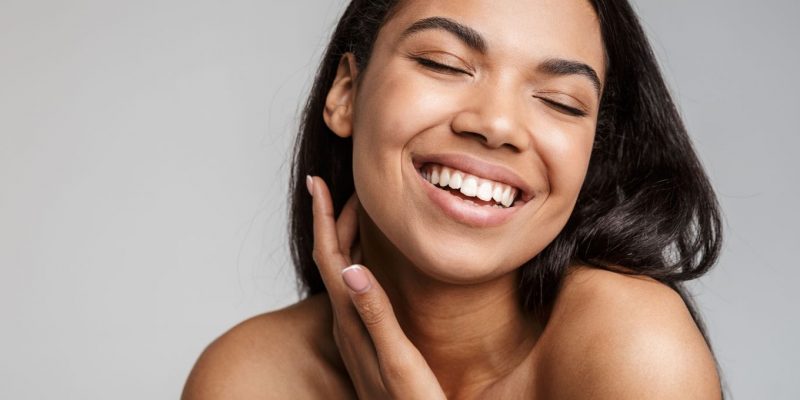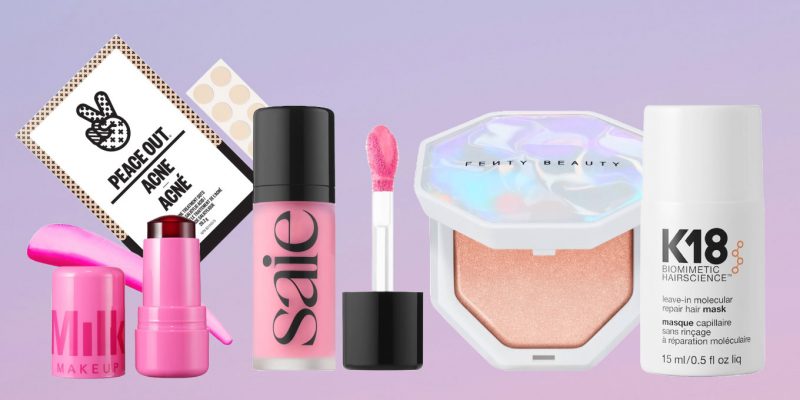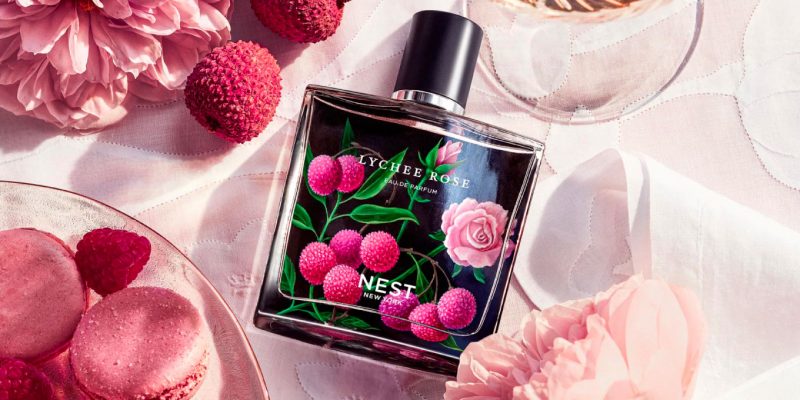Hair
How Alopecia and Hair Loss Affects the Black Community
A recent—and highly publicized—insensitive joke concerning Jada Pinkett Smith’s hair loss has shed light on alopecia, an auto-immune disease that’s particularly widespread in the Black community.
by : Marie-Ange Zibi- Jun 29th, 2022

PHOTOGRAPHY, FELICITY INGRAM/TRUNK ARCHIVE
Hair loss affects everyone to some degree. According to the Canadian Dermatology Association, we all lose about 50 to 100 hairs a day, which is no reason for alarm. What is cause for concern is hair loss that occurs in clumps or when the hair stops growing altogether, says Dr. Danita Peoples-Peterson, a dermatologist and professor at Michigan State University Medical School. This is called “alopecia,” and it can affect some or all parts of the body (the head, legs, face and so on) and occur at any point in a person’s lifetime, regardless of age, gender or ethnicity. It can be linked to an autoimmune condition (alopecia areata and sometimes scarring alopecia) or lifestyle factors such as hair-care practices and styling (traction alopecia). Whether it’s temporary, chronic, hereditary or caused by stress, alopecia is a complex disease that goes beyond aesthetics. A study published in July 2019 in the Journal of the American Academy of Dermatology revealed that African Americans suffer from alopecia at a higher rate due to a combination of genetic and environmental factors.
Jada Pinkett Smith’s case is not unique—several other Black female celebrities have also suffered from alopecia, including supermodel Naomi Campbell, actor Viola Davis and producer Tyra Banks. “Black women here in America and around the world have always been pressured to match Western standards of beauty by straightening their hair instead of wearing it in its natural state,” says Peoples-Peterson. “Adding alopecia to this multi-faceted issue makes it a heavy burden to bear.” One of the most common forms of alopecia in Black women is traction alopecia. “It’s related to harmful hair-care practices such as tight weaves at the hairline, very tight braids and the use of a lot of gel in the hairline as well as wearing scarves,” she explains. It’s characterized by balding at the temples and the nape of the neck, and it affects one-third of Afro-descendant women worldwide.
Earlier this year, a 12-year-old girl in Indiana committed suicide after being bullied about her hair loss. “It was very heartbreaking and disturbing,” says Anthony Gilding, scientific research director at the Canadian Alopecia Areata Foundation Foundation, a Canada wide organization that supports and empowers people living with the disease as well as their loved ones. “It brought back memories of when I was first diagnosed with alopecia.” A study he conducted with dermatologists in Toronto highlights the financial and mental burden of the disease. Characterized by complete or partial hair loss, alopecia areata affects about 2 percent of the world’s population. “Anxiety and depression rates are particularly high in patients with this type of alopecia,” says Gilding, who began losing his hair at the age of seven. “We lose much more than our hair; we lose our self-esteem and self-confidence.”
Joy Blenman, creator of alopecia blog Joyful Beauty, knows a thing or two about the condition. Her experience with alopecia areata began when she was an infant. It eventually turned into alopecia totalis—a complete loss of the hair on the scalp—and then alopecia universalis, which is more advanced and results in hair loss across the entire scalp, face and body. The latter is the most severe form of alopecia areata. “I don’t really remember what it was like to not have alopecia because it started when I was only one,” says Blenman, who works as a senior marketing manager in Toronto. “But I do remember going through a lot of pain and grief when I started to lose my eyelashes and eyebrows.”
Her childhood was marked by bullying and a blatant lack of awareness and education, and the bullying continued long after the schoolyard gate had closed. “It wasn’t uncommon for people—kids and parents alike—to make jokes or comments about my physical appearance,” she recalls. Blenman overcame the stigma associated with hair loss by seeking professional mental-health support. “Speaking with a therapist who was also Black and who, even though she didn’t have alopecia, could understand what I was going through and give me professional advice was liberating for me,” she says.
Blenman created her blog to inspire others who, like her, have always longed to see themselves in the media but were constantly confronted with a lack of diversity in the representation of Black women, who were always shown wearing long braids or wigs. She also shares beauty tips for people with alopecia and invites everyone to explore and celebrate their own beauty. “Growing up, I felt incredibly isolated,” she says. “I know what it feels like to feel unworthy due to hair loss, so I want to encourage people and let them know that it does get better.”
“It wasn’t uncommon for people—kids and parents alike—to make jokes or comments about my physical appearance.”
For Michal Harewood, co-founder of Inhairitance Academy in Montreal, understanding the science behind our hair type is crucial when it comes to dealing with hair loss. She is also very familiar with alopecia since she has the condition herself. After studying at Concordia University, she used her academic knowledge to help clients cope with and treat their alopecia. “I see myself as a solution to the problem,” says Harewood, who’s also known as “the natural-hair whisperer,” a nickname given to her by one of her clients due to her extensive knowledge. “I work hard and do research to find solutions to this problem,” she says. The Inhairitance Academy is affiliated with the Inhairitance Hair Salon in Montreal’s St. Henri neighbourhood, which offers services for all hair types—including kinky, curly and frizzy—and a wide variety of resources for treating conditions like alopecia. “There are different types of alopecia, and they require a keen eye, natural herbs and psychological facilitation with a therapist,” she adds.
Harewood’s personal journey with alopecia began when her mom died of cancer, 17 years ago. “I started losing my hair anytime I was stressed,” she says. “That was really traumatizing, but it got worse when the pandemic started.” She isn’t one to hide the fact that she had to go to great lengths to treat the disease. Like Blenman, Harewood found that therapy helped her rebuild her confidence and self-esteem, which in turn allowed her to help other women in the same situation. “Alopecia is a journey, and sometimes it’s rocky,” she adds, pointing out that she first chemically straightened her hair at age 10 and later experimented with hairstyles before allowing it to grow naturally. “I’m not attached to my hair the same way I was. I am now a baddie and a baldie!”
Long-term solutions for hair loss do exist, though. Experts like Harewood are helping bring this knowledge to the masses, whether through the Inhairitance Academy’s curriculum or by sharing tips about techniques like needling, scalp exfoliation and the use of alkaline shampoo with their clients. According to Dr. Amy McMichael, professor and chair of the department of dermatology at Wake Forest University School of Medicine in North Carolina, anti-inflammatory and stimulating oils can also be used to reduce scalp inflammation and stimulate regrowth. “We’re trying to reduce inflammation because we know that white blood cells attack hair follicles,” she explains. “So the goal is to treat the inflammation at the root, which can be done with antibiotics or steroid injections.” The key is to detect and treat the condition as early as possible. “Alopecia significantly affects quality of life,” she adds. “It can sometimes be permanent, which is very depressing. Don’t wait until you have a big chunk of hair loss. If you start to notice symptoms, like pain or a burning feeling on your scalp, seek help immediately.”
“There are different types of alopecia, and they require a keen eye, natural herbs and psychological facilitation with a therapist.”
Though it may be life-altering, alopecia is not a life sentence. “It is possible to live a successful life and suffer from alopecia,” says Blenman. “In many ways, it can make you more courageous, curious, confident and empathetic to others.” She’s also unafraid to look on the bright side of this condition. “There’s just so much freedom in being able to switch up the way you look or wear different wigs,” she says. “There’s beauty in alopecia—a very special and unique beauty.”
INSTAGRAM ACCOUNTS TO FOLLOW FOR ALOPECIA INFO AND INSPO
@jadapinkettsmith: American actor Jada Pinkett Smith has always been open about her alopecia and regularly shares video snippets with her followers. Bonus: glam looks galore.
@thebaldierevolution: This account features beautiful shaved cuts on Black women.
@joyfulxbeauty: Blogger Joy Blenman’s Instagram page is full of tips for anyone who wants to learn more about alopecia or is just looking for inspiration for everyday looks.
Read more:
Singer H.E.R. Is Here and Now
The Top Hair Trends for Spring-Summer 2022
Getting to the Root Cause of Female Hair Loss
Newsletter
Join our mailing list for the latest and biggest in fashion trends, beauty, culture and celebrity.
Read Next

Culture
Introducing 2024’s Most Innovative Products, Voted on By Canadians
*Adds to cart*
by : ELLE Canada- May 1st, 2024

Fashion
5 Summer Wedding Guest Outfits We’re In Love With
From country western cool to beachy barefoot elegance, you'll be dressed to the nines all season long.
by : Alison McGill- May 1st, 2024

Beauty
ELLE Tried It: Five Serums to Up Your Skincare Game
Members of the ELLE team tested Avène Dermatological Laboratories’ five new concentrated serums. Here's what they thought.
by : ELLE Canada- Apr 25th, 2024




